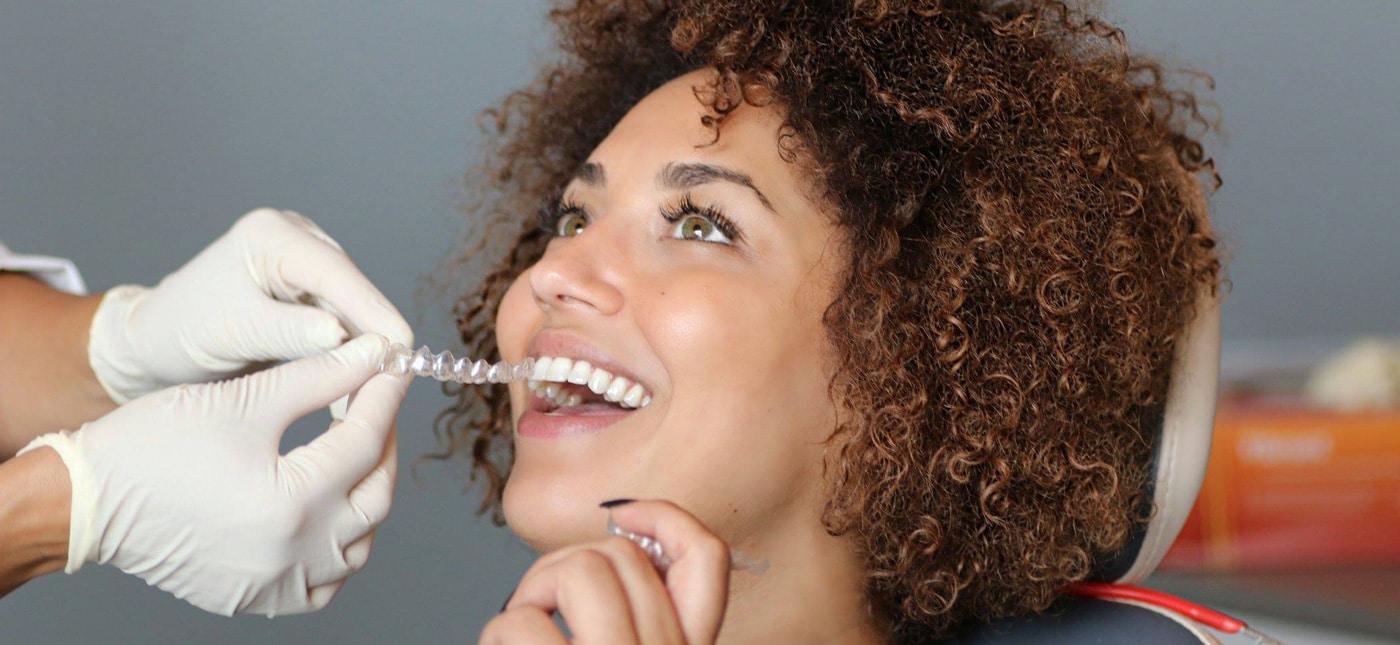Frequently Asked Questions About Orthodontics
Initial Visit
Do you charge for an initial visit?
No, your first orthodontic consultation is completely free. As a courtesy to you, we evaluate your orthodontic needs at no cost and discuss potential teeth straightening options.
At what age should children begin orthodontic care?
We follow the American Association of Orthodontists guidelines, which recommend that children have their first orthodontic evaluation around age 7. Early visits allow us to monitor growth and detect potential issues before they become more serious.
Why evaluate children so young during an early braces visit?
Early intervention is primarily for observation and education, not immediate treatment. During these visits, we can identify developing bite or alignment concerns and determine if early intervention is needed. Most of the time, we simply track jaw and tooth development while providing guidance on habits or oral health.
How long does the first visit take, and is the orthodontist consultation included?
The first visit usually lasts 30–60 minutes, depending on the patient’s needs. It includes a visual exam, X-rays, a 3D scan, and a discussion of treatment options to correct your bite and achieve your smile.
Do you accept patients transferring from out of town?
We accept all patients.
Do you treat adult orthodontic patients?
Absolutely! Adults are choosing orthodontic treatment more than ever. With discreet options like clear braces and Invisalign, achieving a straight, confident smile is easier and more comfortable than ever.
What is the difference between an orthodontist and a dentist, and who should I see for teeth alignment?
An orthodontist is a dentist with at least 3 additional years of specialized training in tooth and jaw alignment. For braces, Invisalign, or other teeth straightening options, it’s best to consult a certified orthodontist.
Can I schedule appointments after school or later in the day?
We strive to accommodate busy family schedules. While some procedures must occur during standard hours, we reserve early morning and late afternoon slots for shorter appointments whenever possible.
Do you handle orthodontic emergencies?
Yes. If you experience an orthodontic emergency, please call our office immediately. Emergency contact information is available on our website and voicemail.
Financial and Insurance
Can I pay for braces or Invisalign over time?
Yes. We offer flexible, interest-free payment plans to fit your budget, whether or not you have insurance coverage.
How is insurance handled for orthodontic treatment?
We offer a courtesy verification of your coverage. Your insurance would then reimburse you directly. If your policy changes, you remain responsible for the agreed treatment fee.
Do you accept credit cards?
Yes, we accept most credit cards for added convenience.
Do you charge interest?
No. All payment plans are interest-free to make braces and Invisalign treatment more affordable.
Are family discounts available?
Yes. We offer special rates for multiple family members undergoing orthodontic treatment at the same time.
Types of Orthodontic Treatment
What is Phase 1 treatment, and how does it help with early orthodontic needs?
Phase 1 treatment begins before all adult teeth have erupted. It addresses major issues like jaw misalignment or crossbites early, making later treatment simpler and setting the stage for a healthier, well-aligned smile.
What is Phase 2 treatment, and how does it compare to braces vs Invisalign for teens?
Phase 2 treatment starts once all adult teeth are in. This comprehensive phase typically lasts 18–24 months, fine-tuning tooth alignment and closing gaps. Both braces and Invisalign are effective options depending on the patient’s needs.
How do I know if two-phase treatment is right for my teen?
Every smile is unique. A two-phase approach may be recommended based on your child’s bite, jaw growth, and alignment goals. A consultation and diagnostic records help determine the best plan.
Moving of Teeth
Do I need pre-medication for orthodontic procedures?
Yes, but only for certain procedures. Always check with your physician or Dr. Oscar Reyna-Blanco before your appointment.
How long does orthodontic treatment take?
Most patients complete treatment in about two years, though timelines vary based on individual needs.
How do braces or teeth straightening options move teeth?
Braces and aligners apply gentle, controlled force to shift teeth into proper alignment. Dr. Reyna-Blanco monitors the process closely to ensure safety and effectiveness.
Do you use recycled braces?
No. All orthodontic appliances are brand new for each patient.
Orthodontic Retainers
Do I need to wear retainers long-term after braces or clear aligners?
Yes. Most patients wear their retainers full-time initially, and then transition to nightly wear to maintain the results achieved through orthodontic treatment. Long-term use ensures your teeth stay aligned and your smile remains healthy and beautiful.
Why do teeth shift even after treatment with braces or clear aligners?
Even after treatment, teeth naturally attempt to return to their original positions. Factors like chewing, muscle movement, and aging can contribute to gradual shifting. Wearing retainers as recommended by Dr. Reyna-Blanco is key to keeping your teeth in their corrected positions.
Are retainers bonded behind teeth a good option?
Absolutely. Fixed retainers, bonded behind the teeth, are a reliable way to preserve alignment, especially for patients prone to relapse. These bonded retainers require consistent oral hygiene and regular dental checkups to prevent plaque buildup and ensure long-term effectiveness.
Wisdom Teeth
Do wisdom teeth cause teeth to get crooked?
No. Current research does not support a direct link between wisdom teeth and crowding.
Why might wisdom teeth need removal during orthodontic treatment?
Impacted wisdom teeth can cause infections or gum problems. Removing them proactively often protects your orthodontic results.
When is the best time for wisdom teeth removal?
Oral surgeons generally recommend removal when about two-thirds of the roots have developed, usually between the ages of 16 and 18.
Temporomandibular Disorders (TMJ)
Can braces or orthodontic treatment treat or cause TMJ problems?
No evidence links orthodontic treatment to TMJ disorders. TMJ issues can occur independently of bite or alignment.
Health Benefits
What are the benefits of orthodontic treatment for adults or teens?
Orthodontic treatment improves bite function, oral hygiene, facial balance, and confidence. Straighter teeth are easier to clean and support long-term dental health.
How do enlarged adenoids or allergies affect braces?
Chronic mouth breathing from enlarged adenoids or allergies may influence jaw development, contributing to crowding or narrow arches.
How does tongue posture affect orthodontic treatment?
Incorrect tongue posture can apply pressure to the teeth, causing spacing or protrusion. Correcting these habits improves treatment outcomes.


